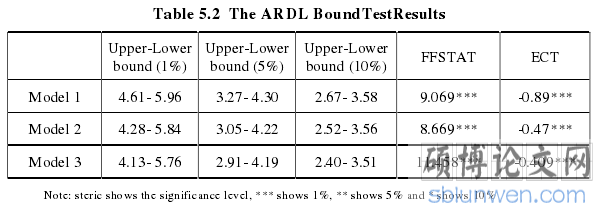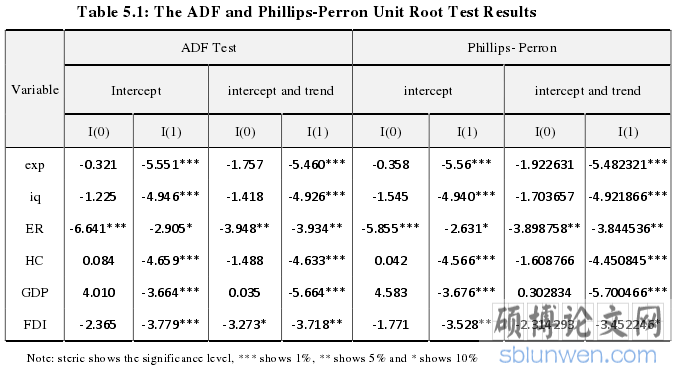Chapter1: Introduction
1.1 Background
“Exports” are driving force for any country’s economy but it does not work alone, there is an another force as well which directs it to work and that is known as “institutions” without institutions exports are just as the car without tyres, so in this example institutions are playing role of tyres and export is the car, where it shows the direct relation between both of them. There are lot of evidence present which shows the direct relation between them and is said that countries who are having better institutions gives more trade to the country (Kraay, 2003).
Those countries who are having weak institutions are very low in exports but those countries which are having strong institutions or good institutional environment are tend to have more bilateral trade, institutional quality is considered as very important source which can give a country long run benefits by trade according to many empirical results.Basically these institutions provide grounds for smooth execution of trade, so it depends on the institutions if they are strong they will provide the needed ground and if they are weak so they are not able to provide the needed ground and which affects the export performance of the country.
Those countries who are having weak institutions are very low in exports but those countries which are having strong institutions or good institutional environment are tend to have more bilateral trade, institutional quality is considered as very important source which can give a country long run benefits by trade according to many empirical results.Basically these institutions provide grounds for smooth execution of trade, so it depends on the institutions if they are strong they will provide the needed ground and if they are weak so they are not able to provide the needed ground and which affects the export performance of the country.
........................
1.2 Institutional QualityAs most of the research and study has witnessed the importance of institutions with respect to exports of a country, every result has seen positive impact on the export performance of a country, so in this portion there will be a detailed study of Pakistani institutions due which Pakistan’s exports are not doing well since decades.
The export performance is dependent on the institutional quality which clearly highlight that Pakistani institutions are not playing their role the way it should play due to which there has always been seen the decrease in the country’s exports.
It has been witnessed that the institutions which are weak gives weak export growth which force the economic agents to give low economic returns via exports, while on the other hand good and strong institutions gives economic returns at high level via exports as when the institutional quality is good and strong they reduces the insecurity which results in more efficient work, The overall country’s export productivity is dependent on the quality of institutions, when the institutions are well developed and negative in corruptions they give higher export growth for the country Saima, Nasir and Muhammad, (2014).
It has been also said that weak institutions changes the direction of the resources to unproductive sectors which start promoting rent seeking activities while the strong institutions negate the rent seeking activities behaviour and gives economic growth including the export performance Iqbal and Daly, (2014).
..........................
Chapter 2: Literature Review
2.1 Importance of Institutional quality
Institutions are known to be the most important part of any country, and specifically institutions are the one which play role in exports as well, it depends on the strength of institutions which makes ground for the exports of any country.If institutions are strong so they provide strong grounds for the exports and export performance is in positive direction, which means good institutions are the factor that makes the performance of export better, detergent which good and strong institutions encourage is research and development which direct effects the export performance of a country, one can say that institutions are having strong impact on the export quality of the country (Faruq, 2011).
Institutions are the one that make rules, policies and agreements and it depends on the how much strong rules, policies are being made, the more strong rules and policies will give rise in exports and weak policies and rules will certainly do vice versa (Henri L.F. de GROOT, 2005).
The important aspects of institutions and their enforcement in the country are accepted all over the world, so the countries which are developed have very strong institutions with respect to the countries which are still developing, the countries which are still developing tends to have weak institutions because of their weak political and legal infrastructure, though in developed countries it is opposite which make their institutions more strong enough, which are able to make ground for exports more suitable and their export performance is more good though the developing countries with weak institutions are unable to take more strong and good decision because of their weak skills in the developing institution which do not provide more suitable ground for their exports and because of this their export performance is not up to the mark (Joseph A. LiPuma, 2011).
.........................
2.2 Institutional Quality and Pakistan’s Institutions
The literature has witnessed the importance of institutions and have concluded with dependence of exports on the institutional quality of the country, the literature has seen lot of results that there is huge relation between the institutional quality and exports.
There should be deep study on the determinants of exports because institutional quality is one of the important determinants which is used in making of structure for investors in export oriented industries, institutional quality, human capital, real exchange rate and world exports in different literature shows results that all of them have significant results and long run relation among each other, at the moment the weak institutions have forced Pakistan to remain away from producing high value added products which shows that Pakistan is not well equipped with the technology and human capital, if these sectors are improved they can compete globally, (Mangla, 2017).
According to the literature there is huge impact of institutional quality on the economic growth which certainly shows that there is significant relation between exports as well, the results in the literature shows by using panel ARDL that panel causality is going from institutional quality towards export which shows that they have huge relation, (Nabila Asghar, 2015) Nabila.

..........................
Chapter 3: Export in Pakistan: An Overview ................................ 14
3.1 Background .............................. 14
3.2 Pakistani Exports Figure and Facts .................... 14
Chapter 4:Research Methodology .................................. 22
4.1 Data Sources Collection ................................. 22
4.2 Model .............................. 22
Chapter 5: Results And Discussion .......................... 27
Chapter 5: Results and Discussion
In this chapter we will analyse the results we got from the tests that were done later will describe and explain the empirical findings, how those tests were done and which tests were used for analyzing the data is already discussed in chapter 4.
The order of the tables will be according to tests applied on the data. To know whether the variables are stationary or not, we have applied unit root tests to get the results, Augmented Dickey-Fuller unit root test and Phillips-Perron Unit root test are applied to get the wanted results.
Table 5.1 is showing the Augmented Dickey-Fuller unit root tests and Phillips-Perron Unit root test results, where in the table it is witnessed that the variables are stable, the stability in the results are taking us to apply auto regressive dependent lags (ARDL) tests to know the relations between the variables. Times series data of all the variables from the period 1984-2017 are used.

...........................
Chapter 6: Conclusion
This thesis is presenting the detailed study of the impact of institutional quality on exports an empirical evidence from Pakistan, in which ARDL model and time series data are used, different literatures has been studied to know the realities and to get points of most of the researchers in different perspectives.
The variables were taken such as exports which is dependent variable, institutional quality (IQ), Exchange Rate (ER), Human Capital (HC), Gross Domestic Product (GDP) and Foreign Direct Investment (FDI) are independent variables, and these variables have been taken to know the impact of institutional quality on export performance of a country.
The study has witnessed that institutional quality has huge impact on the export performance of a country, institutions are playing the role of driving force for the export performance of a country, when the institutions are strong then export performance will be positive but if institutions are weak then export performance will be negative.
Pakistan has been focused in the study because Pakistani exports didn’t do well since long period of time, though every changing government has given different economic policies but unfortunately Pakistani exports didn’t increase and on other hands imports were and still increasing, for this purpose a detailed view of Pakistani exports and institutional policies have been explained above.
reference(omitted)
